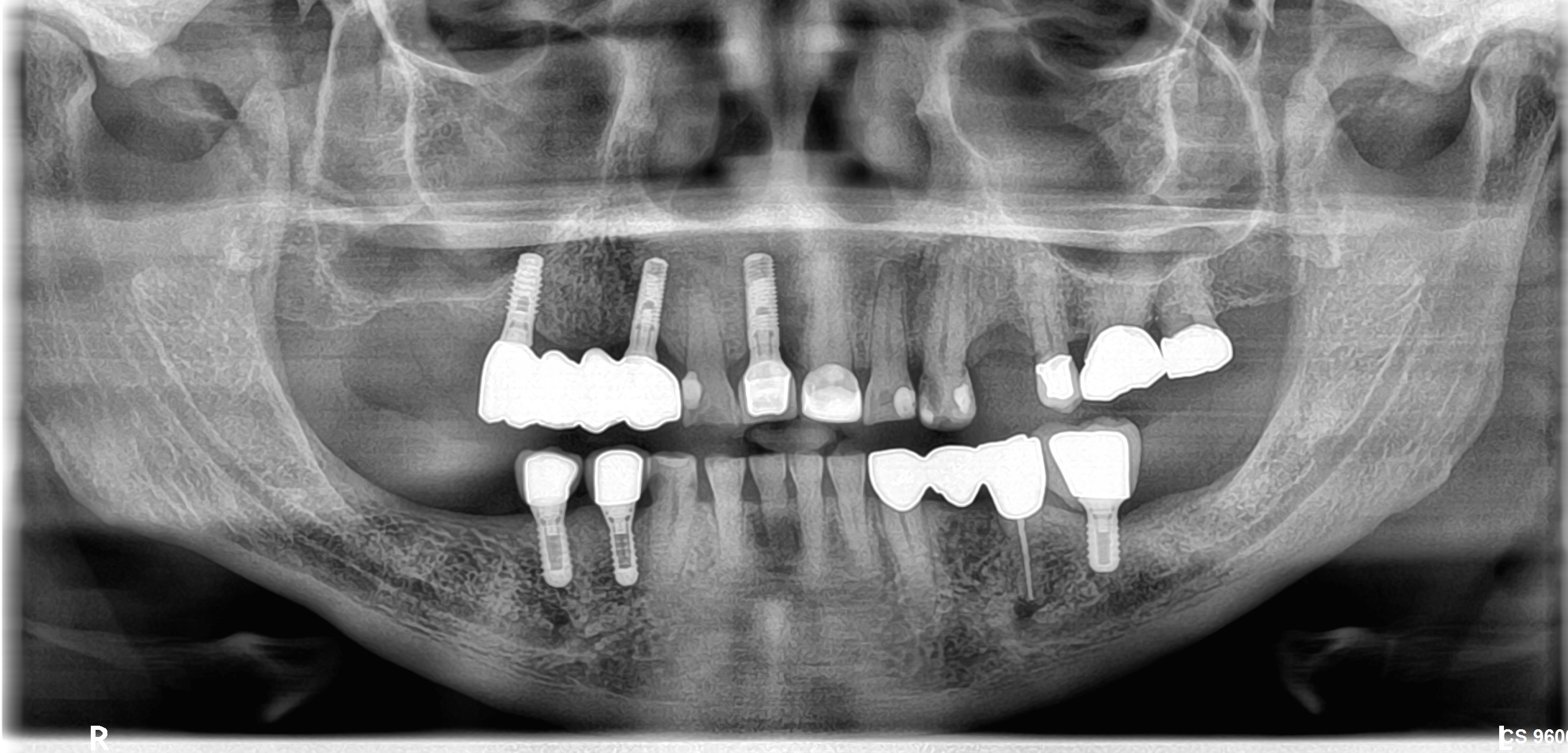Sinus Tract Next to Implant #8: Input?
After two year of uneventful implant placement in sites #8 and #9 with surgical guided protocol, followed by treatment that included screw retained implant temporary crowns on #8 and #9, that lasted for this patient over one year, the sites of #8/9 were finally restored with Zirconia abutments and Emax crowns. After only two weeks with permanent crowns, the patient developed a sinus tract next to area #8 (see attached pic). Immediately, high density small volume CT was order for the area #8 and Xray images were taken with GP inserted into sinus tract to closely examine the site. Upon examination of CT images that shows buccal plate is somewhat thin, yet all of the implant treads are not exposed(see pics of the CT). Although, my initial thought was to remove the permanent crowns, expose the area, curette the area and apply bone and membrane, yet because this is somewhat in the gingiva, I only tried to drain the fistula and curette the area since there is at least 6-7mm of sulcular height. Any input as to why this would happen especially after screw retained temporaries that lasted over one year? What would be better approach to address this situation? Thank you and your help in this matter greatly appreciated.



















